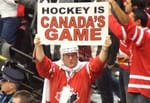Some sports capture the spirit of unity and cooperation the way hockey does. The game thrives on connection, trust, and anticipation among teammates who must move and think together as if sharing a single mind. Every pass, shot, and defensive stand depends on communication that often happens without words. Teamwork is not a tactic but a foundation, the element that transforms a collection of individuals into something greater than the sum of their parts. Without it, even the most skilled players would struggle to sustain rhythm or success.
The development of teamwork begins long before game day. Players spend countless hours in practice, repeating drills that build not only skill but awareness of how others on the ice think. Defensemen work on timing their clears with a forward’s breakout, wingers learn how to anticipate a pass before it is made, and centers adapt their positioning to control the flow of play. These sessions teach players to read movement as instinctively as breathing. The result is a natural flow that defines strong teams. When every skater understands where the others will be, the ice feels larger and the game slows just enough to reveal endless possibilities.
One of the best illustrations of teamwork in hockey is the precision of the line change. The game does not pause for substitutions, and players must time their entry and exit perfectly. A well executed change keeps pressure on the opponent and maintains structure, while a poorly timed one can lead to defensive collapse. This constant rotation demands synchronization and awareness that can only be achieved through trust and repetition. Coaches study combinations carefully, finding the ideal mix of styles and personalities that complement one another. Over time, certain lines develop chemistry so natural it feels effortless, where players seem to know what the others will do without ever needing to look up.
Defensive teamwork carries its own beauty. It is less about individual brilliance and more about collective precision. Players communicate through subtle signals, coordinating coverage, blocking shooting lanes, and anticipating rebounds. Each skater becomes responsible not only for their zone but also for supporting others. When one player moves out of position, another must instinctively fill the gap. A successful defensive stand often feels like choreography, with every motion countering an opponent’s advance. Teams that defend together with discipline and trust often control the pace of a game, turning defense into a form of silent dominance.
Offense, by contrast, transforms teamwork into creativity. Passing plays, puck cycles, and rush formations all rely on the shared vision of players who think several moves ahead. Great offensive units rarely rely on individual scoring talent alone. Instead, they use movement and anticipation to draw defenders out of position. A single successful scoring play might involve three or four precise passes, each relying on timing measured in fractions of a second. This rhythm of movement is what gives the game its artistry. When it works, it feels less like competition and more like improvisation between players who trust one another completely.
The goaltender may appear isolated but is deeply connected to the team’s structure. The goalie acts as both communicator and anchor, directing defenders and calling out developing plays. In return, the skaters protect shooting lanes, clear rebounds, and make life easier in the crease. This relationship forms the emotional center of many teams. When a goalie feels supported, confidence spreads throughout the lineup. When players believe their netminder will stand tall behind them, they play with greater aggression and freedom. The partnership between a goaltender and their teammates defines not only defensive success but the overall identity of the team.
Teamwork stretches beyond the boundaries of the rink. The culture within a locker room often determines how a team performs under pressure. Experienced players pass down habits of preparation, discipline, and humility to younger teammates. Coaches create environments where every player feels valued, whether they score game winning goals or block shots that go unnoticed on the stat sheet. Championship teams share a bond that carries them through adversity. When a roster trusts one another completely, setbacks become temporary, and even during losing streaks, the belief in collective strength keeps them from breaking apart.
Leadership within a team reflects the same principles that define teamwork. Captains and assistants act as mediators between coaches and players, ensuring that communication flows in both directions. The best leaders know how to listen, motivate, and guide without overpowering others. They lead through consistency and example, showing commitment to every shift and every practice. Leadership in hockey is not defined by titles or recognition but by the willingness to put the group above the individual. This type of leadership fosters an atmosphere where teamwork thrives naturally.
When players come together for international tournaments, the importance of teamwork becomes even more visible. Skaters from different leagues and backgrounds must quickly adapt to one another’s styles. They often have only a few practices to build chemistry before facing seasoned opponents. Yet the shared goal of representing a country creates instant unity. The pressure of competing on that stage turns teamwork into a source of pride. It becomes proof that communication and trust can overcome differences in language, system, or experience.
The concept of teamwork in hockey extends far beyond the players who take the ice. Coaches, trainers, and equipment managers form the unseen structure that keeps a team functioning. Coaches plan systems built on collaboration, assistants analyze opposing tendencies, and trainers monitor player recovery and conditioning. Equipment staff maintain skates, sticks, and uniforms so that no technical issue disrupts performance. Each of these contributors plays a part in the collective effort. The success seen on the scoreboard is built on countless small acts of preparation and cooperation.
The emotional power of teamwork is what gives hockey its lasting impact. Players learn to share triumphs and setbacks equally, celebrating goals as a group and accepting blame as one when mistakes occur. Selflessness defines the best teams. Blocking a shot, covering a teammate’s turnover, or sacrificing a scoring opportunity for a safer play are acts that demonstrate the true nature of the sport. These moments build respect and unity, creating bonds that last long after seasons end.
The lessons of teamwork reach far beyond competition. They teach discipline, empathy, and accountability, qualities that carry into every aspect of life. The game rewards those who think collectively, who see value in cooperation over individual glory. Every pass that leads to a goal, every defensive recovery, and every show of encouragement after a tough shift reinforces the same message. Greatness in hockey, as in life, comes not from standing alone but from lifting others alongside you. Teamwork remains the silent strength that drives every level of the game, shaping not only victories but the very spirit of those who play it.


